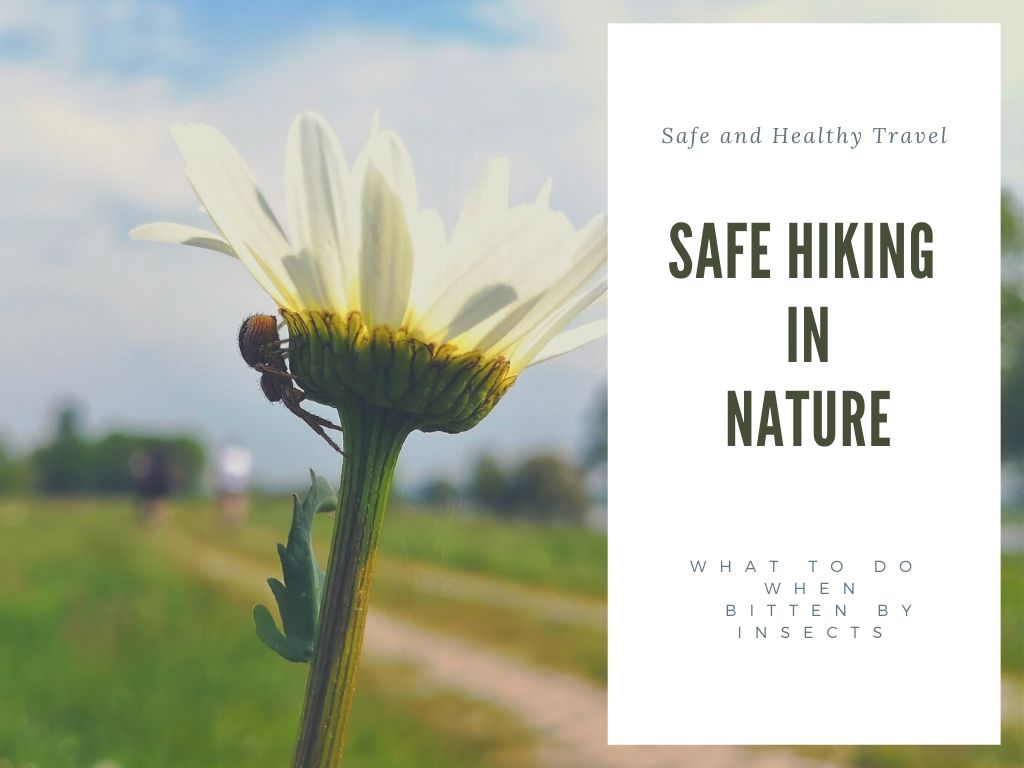I like to go hiking in nature and of course I like to do so in a safe way. I was walking in nature a while back and I said a little proudly to my walking buddy that I actually never suffer from irritation from plants, mosquitoes or a tick 🙂
This was during our 3 day Lee Trail in Luxembourg. My hiking buddy Anto van We12Travel suffered quite a lot from all kinds of plants along the path and I had a tick on me twice which I saw in time and wiped off. For her, safe walking in nature is much more a matter of preparation and taking all kinds of situations into account.
But…less than 2 weeks later, just during my work, on surveillance, I felt irritation above my left ear.
I was scratching and feeling it while driving our surveillance car. At one point I got the suspicion that I had a tick on that spot. I got it halfway off my skin… One side was stuck… I turned around in such a way that my colleague could inspect my ear.
He confirmed my suspicion…. I had a tick!

During the warm weather you should of course drink enough water!
I had been sitting on the ground outside, the day before, when we had a call to go to a mentally unstable person. This was in an environment with lots of grass, flowers and trees. It had taken almost 2 hours before the psycholance (An ambulance for the mental sick) was there and because of the heat, it was then over 30 degrees I had stood and sat in the shade.
Safe Hiking in Nature
&
What to do when being bitten by insects
-
A tick bite… What to do?
- When is the tick active?
- Is every tick infected with Lyme?
- Can other diseases be transmitted by the tick?
Besides Lyme disease there are of course other pathogens that can be present in the ticks. This percentage is higher, about 30% of the ticks have a pathogen in them such as bacteria, a parasite or a virus. So it is always important to keep a close eye on how you react to a tick bite. They can cause fever and flu-like symptoms.
- How do you get a tick bite?
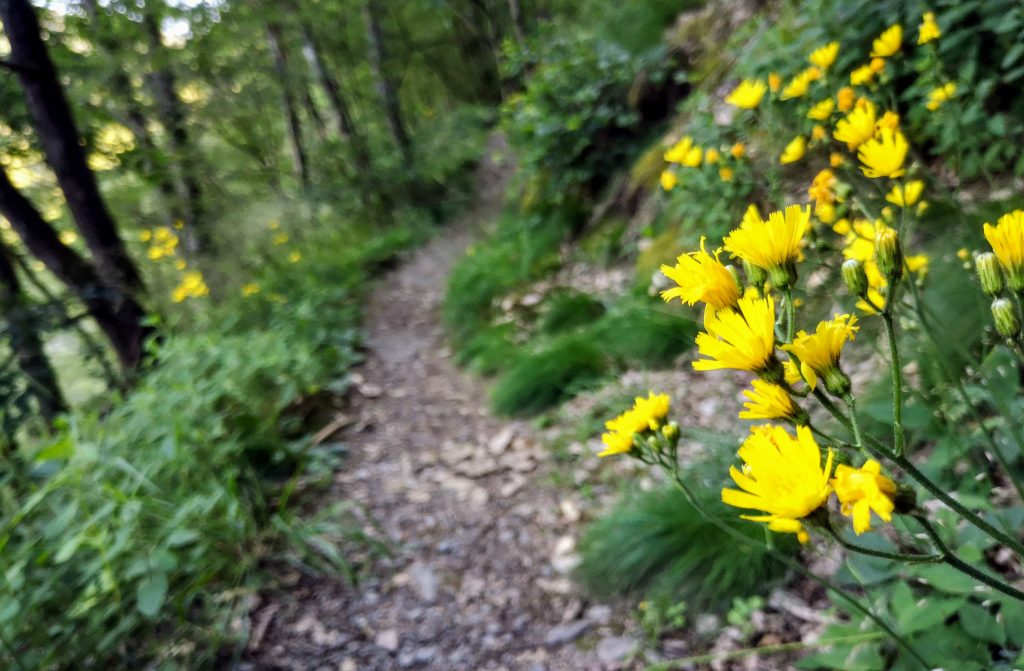
- How do you remove a tick?
If you find a tick on your body, don’t scratch and pull it like I did. I didn’t see what it was and didn’t realize until later. If you see the tick go look for a so called drawing pincer, tick remover or if you don’t have one with pointed tweezers.
Grab the tick as close to the skin as possible, then grab it by the head, and slowly pull the tick out. Don’t do this too fast because then you have a chance that something will break off. In itself this is not dangerous, just like a splinter it will come out by itself.
If you remove a tick before it has been there for 24 hours, the chance of infection is small. Still, you have to take into account that it can be wrong.
Write down for yourself where and when you have been bitten so that you remember this well and if there are still symptoms of illness you know when and you can count back.
- Keep an eye on the tick bite for a while
—
Safe Hiking in nature
&
What to do when being bitten by insects
—
Besides these nasty little animals, the ticks,
there are, of course, some other insects active lately.
-
The Oak Processionary Caterpillar
This oak processionary caterpillar has been present in large numbers in recent years. The period that we suffer most from it can be as early as the beginning of April (spring) and continue until the end of July (summer). Due to global warming, I know Fake News… but yet it’s a fact. Because of this, this caterpillar is also present in the Netherlands and can survive and multiply excessively it seems. The number of caterpillars in the summer of this year, 2019, has tripled compared to previous years.
This oak processionary caterpillar can cause a lot of irritation.
I’ve experienced it myself because during my work I sometimes stand on the street and can’t always stay away from under the oak trees they’re in. The irritation spots look like light burns, they are slightly red and thickened.
- Be carefull for your pet
It can even be deadly to animals. A cat or dog licks itself off and if the fur contains a lot of burn hairs of the processionary caterpillar, its tongue can die. This can be fatal for the animal.

In many places in the Netherlands there are warnings against the oak processionary caterpillar.
Around the oak trees in which they are located you often see the red and white ribbons with the text Look out Oak Processionary Caterpillar. That is what they do in The Netherlands, don’t know if they will do that in your country too? It is also often the case that the municipality, when a nest of the oak processionary caterpillar is reported within a suburb (neighbourhood), has the nest professionally removed.
- Counteract the effects of the oak processionary caterpillar
What is a very effective way to reduce the symptoms in the beginning and prevent worse is to clean the areas with tape or tape. Stick the tape on and pull it off again. This way you can remove the stinging hairs that cause irritation to or from the skin.
What also seems to be a solution is to put the hairdryer on it. Blow over it as hot as possible and then the hairs of the oak processionary caterpillar will burn away!
In addition, there are several ointments on the market. Most of them contain menthol and these cool the area down. This makes the itching a lot less. After this it’s just waiting for it to stop. Unfortunately, it can continue to itch for about 2 to 3 days.
Fortunately, there is generally no lasting reaction or complaints for humans.
Sometimes the complaints can be worse than described above, such as complaints that resemble a cold or even a thickening of lips or swollen eyes. In that case it is certainly advisable to contact your family doctor. You can get an inflammation that, depending on where it is located, can cause unpleasant consequences.
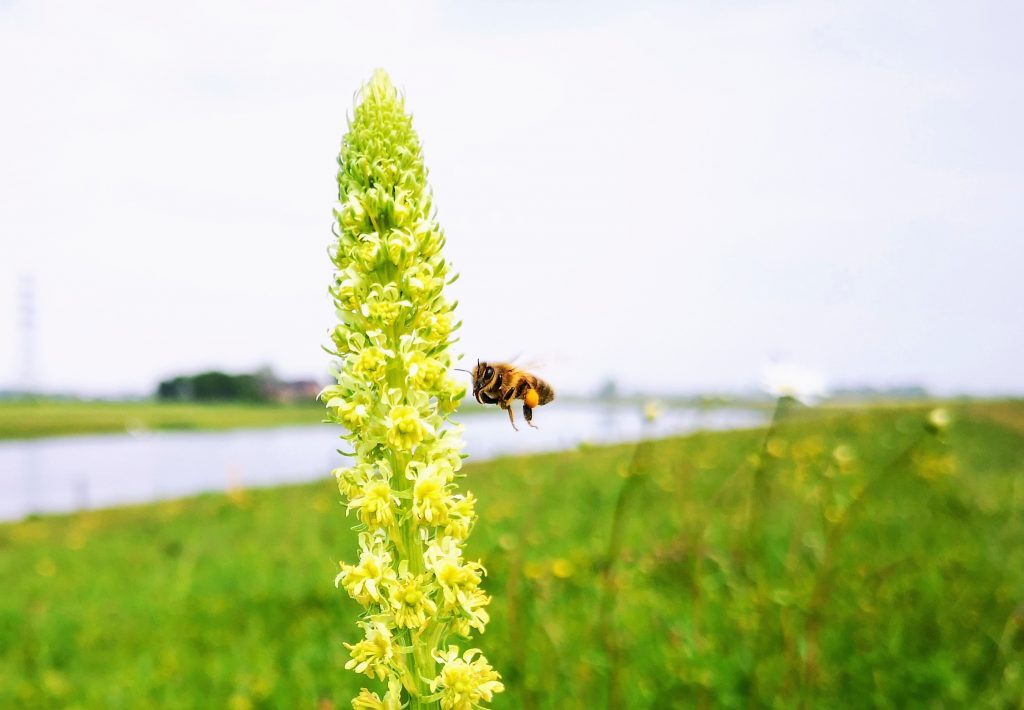
-
Mosquitoes and other insects such as wasps / hornets.
There are all kinds of anti-mosquito or anti-insect sprays. One just helps better and is more effective than the other. This also depends on the person I sometimes feel. As if your own body smell mixes in and it strengthens or weakens.
When I’m stung… Which fortunately doesn’t happen very often, I try not to scratch. This makes the irritation bigger, the place bigger and it takes longer before it fades.
I always have tiger balm with me or other oil or ointment that smells strong and has a soothing effect. With me, the tiger balm helps against the itching.
What exactly is something that helps with you?
Safe Hiking in Nature
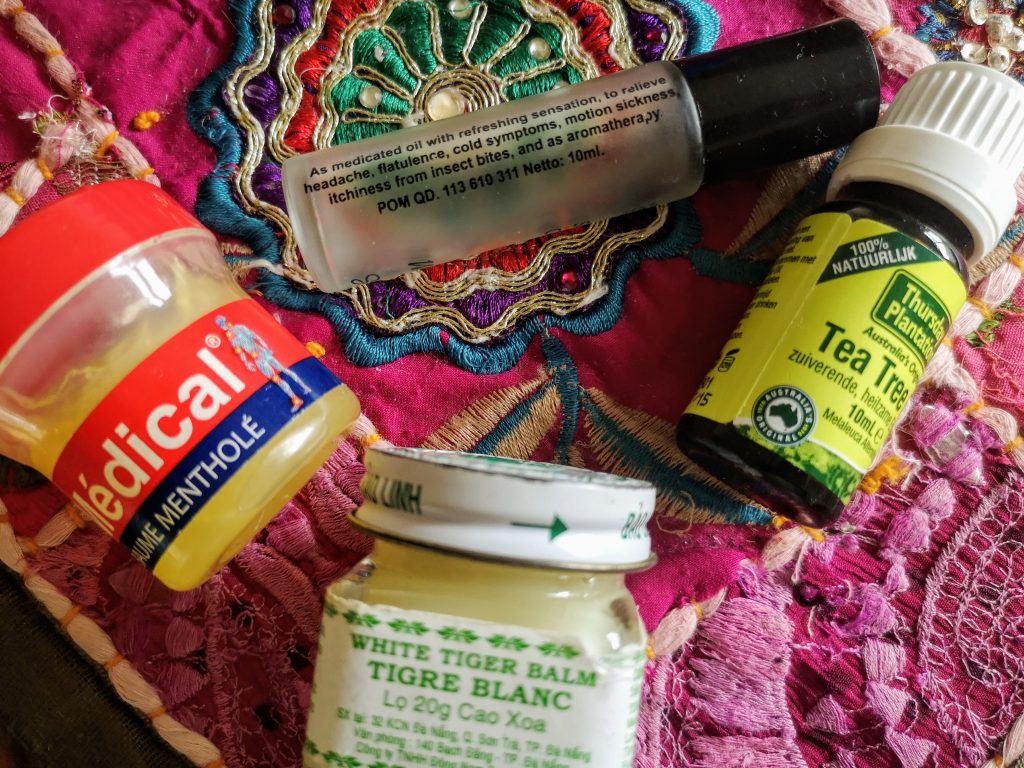
All collected from different countries where I have been from The Gambia, Sumatra, Vietnam and the Tea Tree here from the Netherlands.
Grandma Knows Best
My grandmother used to tell me that if you bruise the Plaintain plant and put its juice on a mosquito bite, it stops itching. This is especially effective for the nettle. I have to say that I still do this a lot, especially because it grows over between the paving stones and is therefore easy to find.
- Citronella
I used to use citronella a lot. You probably know it, from those candles that burn outside on the terrace in the summer evening. In the end it has never been proven that it helps, that it keeps the mosquitoes at bay. Most mosquitoes stay away for a while and then they seem accustomed to the smell and come anyway.
- Bees / Wasps / Hornets
These creatures are slightly larger and therefore the irritation spot is also slightly larger and it often takes a little longer before it is over.
Once I was stung by a bee. I was looking at a beehive that was placed in the forest. When I stepped off the path to take a picture. I immediately saw that a number of bees came flying towards me. Scared the hell out of me! I was at least 10 meters away from those hives. Of course I ran and knocked off some of them. One managed to sting me on my cheekbone anyway.
Luckily there was a family who walked the same path and saw me running in panic… (I really wonder what that looked like – slapstick images I see in front of me) When the threat was over I ran to them. It turned out the sting was still in my cheekbone and the father pulled it out for me.
I suffered from this hump for quite a long time and my cheekbone felt painful when I happened to lean on it.
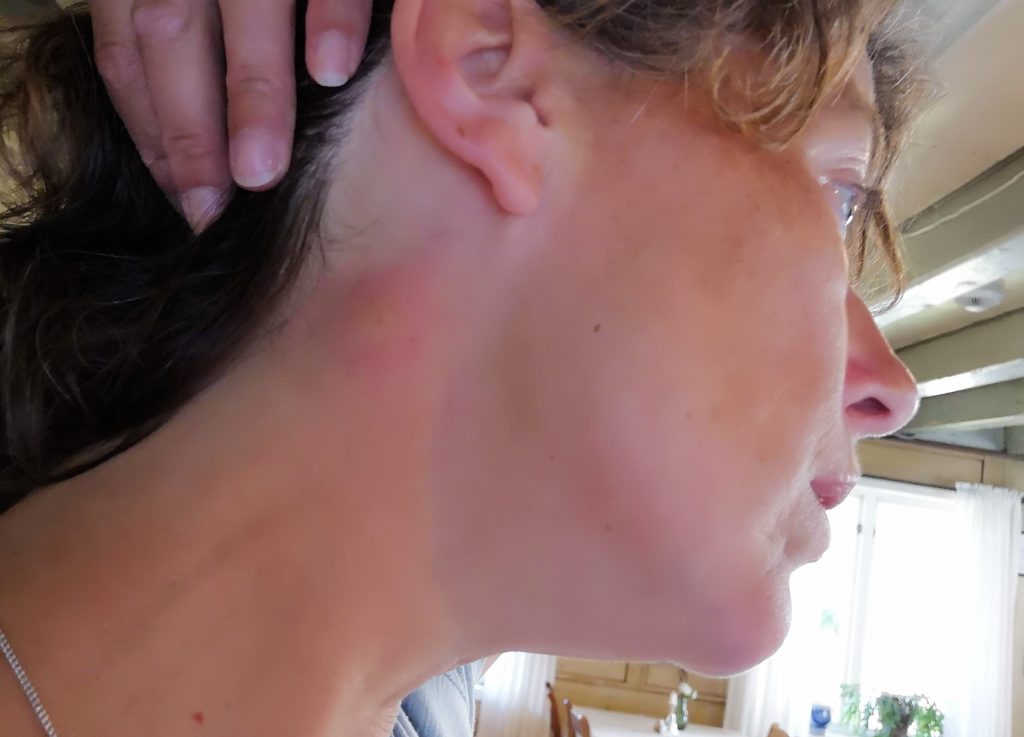
I suspecta hornet stung me in my neck on my walk in Norway…
The best thing you can do against the itching of this stitch is to cool it with ice and apply an itch repellent lotion or ointment.
If you keep scratching a spot, the substance inside continues to irritate the spot and spread. This only exacerbates the symptoms. It itches and so you want to scratch and that is exactly what you should not do!
I had tiger balm with me and put it on the spot every night.
-
Leeches
I’m almost afraid to say I’ve never had these in or on my body… Then I’ll probably find a leech on my body the next trip 🙂
When I went into the jungle on Sumatra for a few days to see the Orangutan, the Dutch couple both had a leech on them in turns.

Not charming but essential in some parts of the world for safe hiking in nature!
Safe Hiking in Nature of India
Also in India I had to wear high, special socks several times to keep out leeches. Also in Thailand, Khao Yai, they advise this. There we saw how a leech disappeared through the sneaker of a fellow traveler in her shoe. You know that gauze which is often on the front / top of the sneaker. I never expected a leech to get through that…
Luckily, she was also wearing one of those anti-leech socks. Such a sock is made of very tightly woven fabric or also of polyester/nylon. The leech then either doesn’t get a grip on the sock or just can’t get through because the sock is so tightly woven.
Which is nice to know that a leech doesn’t have any diseases and doesn’t actually cause any pain. What can happen is that the wound that is left behind eventually ignites. So you have to keep it clean and well cared for. The wound is ususally gone after a week.
What you should certainly not do is burn the leech with a cigarette while it is still attached to your body. The leech will release quickly…it will… But it can happen that he vomits out his stomach contents, which then gets into your body. There could be all kinds of bacteria in here, causing inflammation.
Did you know there are leeches in the Netherlands? They don’t like people, so it’s a bit unknown. They live in fresh water and there are no less than 30 different species in the Netherlands!
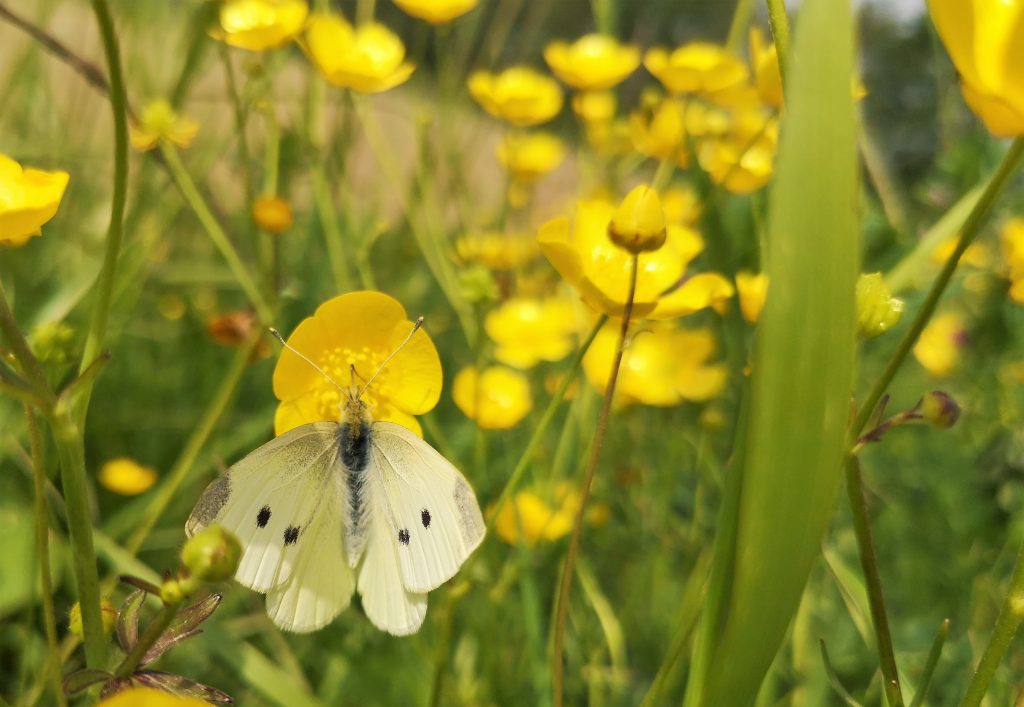
-
Snakes
There are also snakes in the Netherlands. Most of them are fortunately non-toxic and in general you won’t get close to them. In the Engbertsdijksvenen I took a nice walk a couple of times and went looking for the viper with my nephews.
Good to know that the viper is poisonous. It is also the only poisonous snake in Belgium and the Netherlands. That’s also good to know because you don’t have to watch out for other snakes!
Check out which poisonous snakes are present in your surrounding on the internet!!
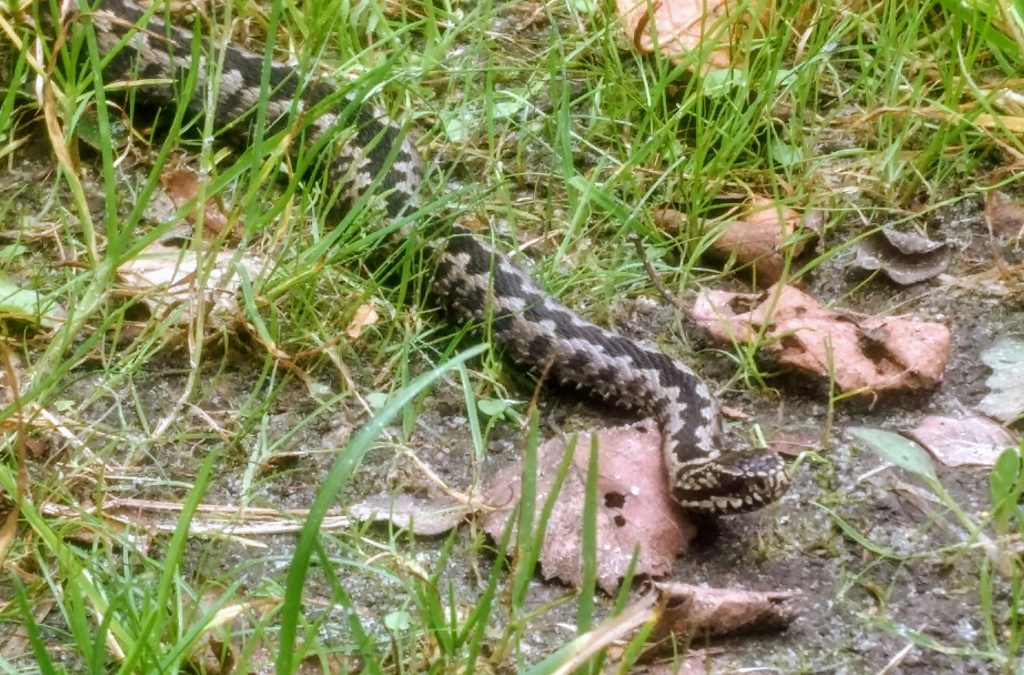
What if you got too close, both of you didn’t pay attention and kicked oid? What do you do then?
Did you know that only 220 viper bites have been reported in the Netherlands since 1885?
It’s not very common, but you have to watch out for it. If you are allergic to snake venom it can cause very serious symptoms. The complaints range from swelling, vomiting, diarrhoea and abdominal pain. It is always necessary to consult your doctor immediately.
It’s always good to lick the place clean when you’re in nature. So if you’re not well prepared because you don’t have anything with you use your saliva. Did you know that saliva is a great alternative?
Because it contains enzymes or also called active proteins (also called histanine). They provide a faster blood vessel formation which in turn ensures a faster healing. It is not so much disinfecting what it is good for, but for recovery!
Did you find these tips useful?
Then keep them or share them for others!
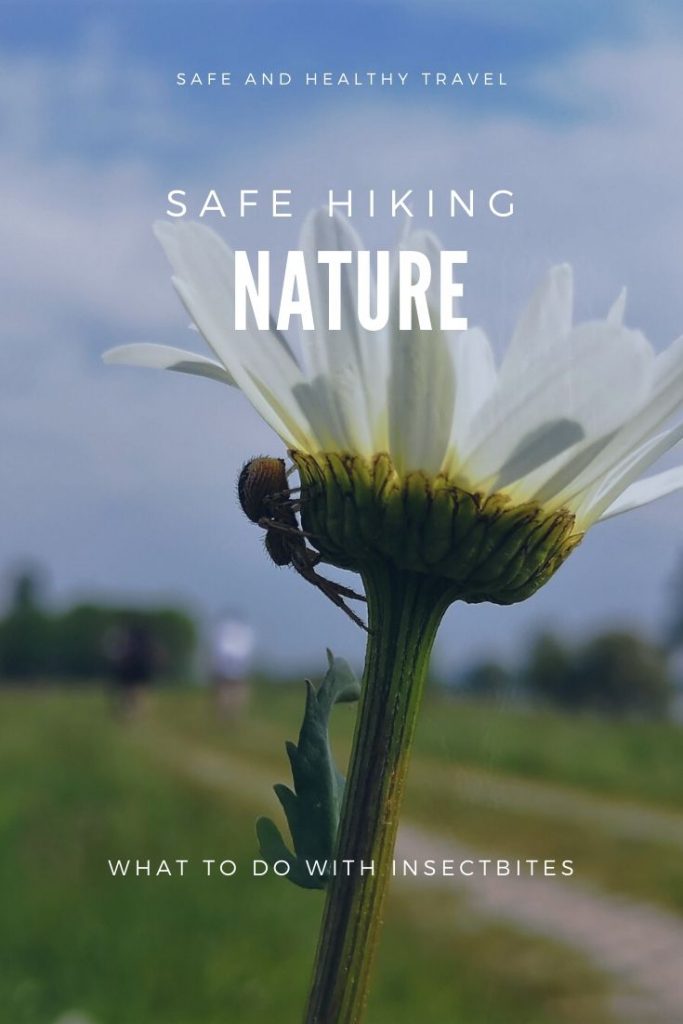
Safe Hiking in Nature!
I hope you will continue to walk confidently in nature because there is of course nothing finer than to relax this way after a week of hard work!
Pilgrim Path St. Olavsleden – Norway
Hiking in Germany – The hermannshoehen Hiking Trail
Hiking the N70 – Nijmegen, The Netherlands
Or do you want to do a real pilgrimage in Spain?
I hope you love this world as much as I do!
